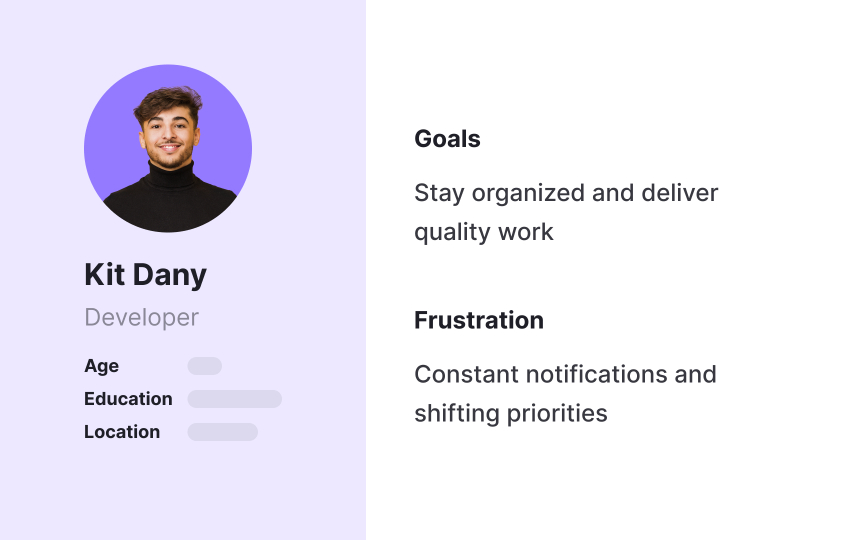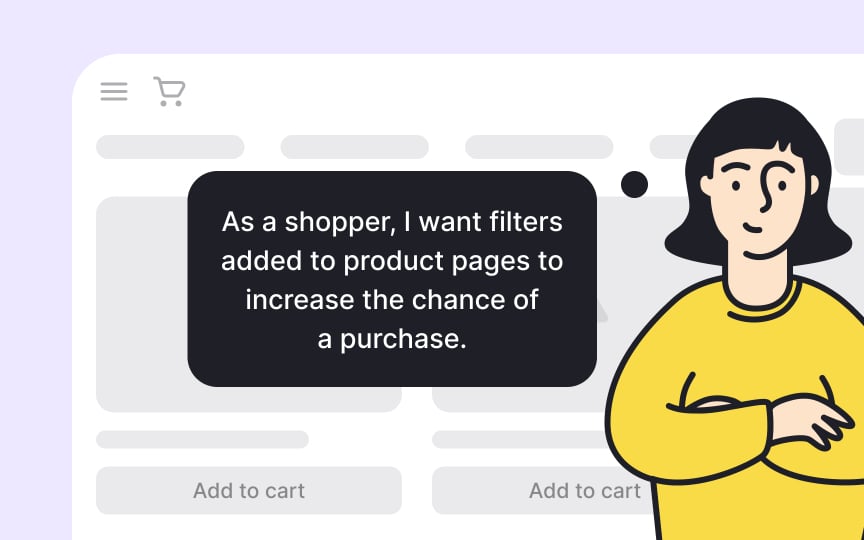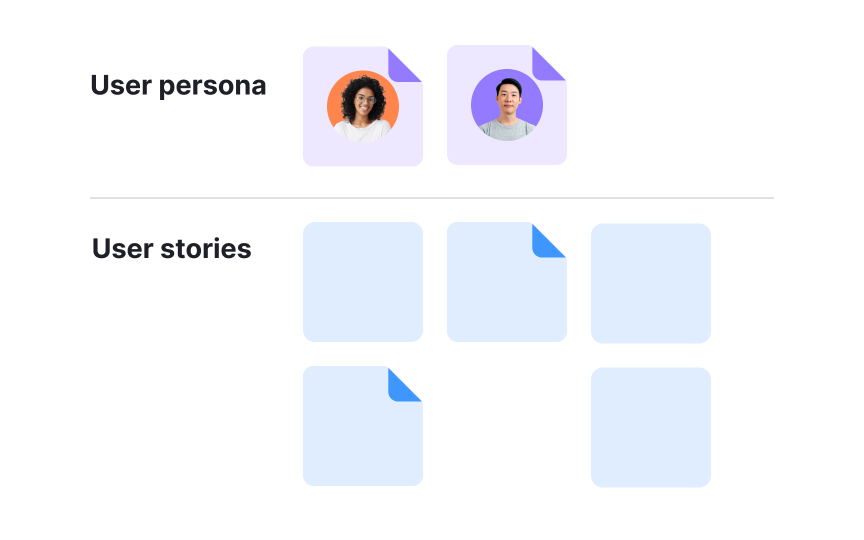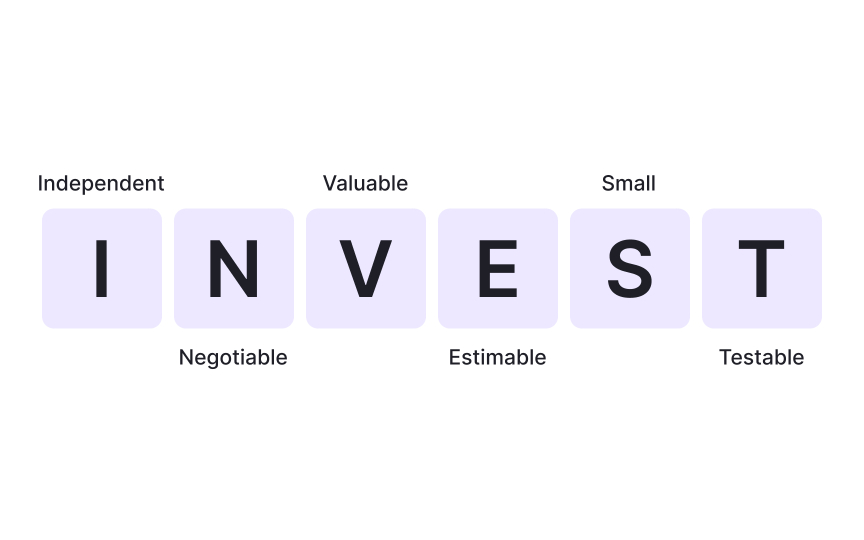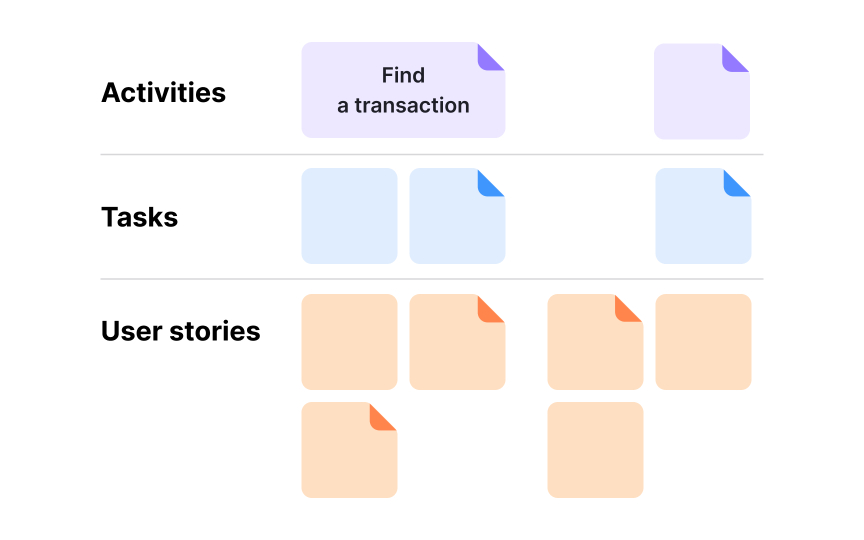Understanding Users and Framing User Stories
Build empathy and clarity by translating real user needs into actionable product stories.
Effective product specifications depend on how well teams understand the people behind the requirements. User personas and user stories make this understanding tangible. Personas turn research findings into memorable profiles that capture real motivations, behaviors, and frustrations. They keep design and product discussions centered on actual needs rather than assumptions.
User stories then translate those needs into clear, actionable statements that describe who wants something, what they want, and why it matters. Instead of listing features, they frame development work around user value and outcomes. Together, personas and user stories create a shared language that links empathy with execution, helping teams craft product specifications that serve real users and business goals alike.
When a team refers to a persona by name, it anchors conversations in a shared understanding of who the product serves. This makes collaboration smoother and keeps attention on solving real problems. Unlike raw demographic data or market segments, personas humanize research insights and make them easy to recall throughout the design and specification process.[1]
Pro Tip: Treat personas as living references that help every design or feature discussion return to real user needs.
Creating
- Age
- Occupation
- Context of use
- Experience with the product
A strong persona balances facts with storytelling. It is grounded in evidence yet presented as a relatable human portrait that supports
Pro Tip: Base personas on real data, not imagination. Every detail should help explain how users think, act, or decide.
Understanding what drives or blocks users helps turn data into meaningful insights for
Recognizing both aspects helps teams see users as complete people, not just problem-solvers. For example, two users may share the same job title but differ in motivations or comfort with technology, leading to distinct frustrations and expectations. Effective personas connect these motivations and pain points to measurable outcomes. They clarify what success looks like for users and what stands in the way of achieving it. Mapping these patterns ensures that personas represent not just who users are, but why they act as they do, guiding product specifications toward real, validated problems worth solving.[3]
Pro Tip: Always define what success means for users. Their goals and frustrations are the most direct path to valuable product insights.
User stories give teams a simple way to describe what users need and why it matters. They are short, goal-focused statements written from the user’s point of view, often using the format: “As a [
This clarity is what makes user stories vital in agile and product documentation. They provide shared understanding between product, design, and development teams about who the product serves and what outcome it should achieve. A well-formed
Pro Tip: Keep user stories short and focused on value, not on features. If it’s too technical, it’s no longer from the user’s voice.
This process also encourages cross-functional collaboration. Designers and engineers can align on how each story supports a particular user’s journey, while product managers can prioritize work based on impact. In this way, user stories become a natural continuation of persona work, bridging
Pro Tip: Always link stories to specific personas. It keeps product goals grounded in real people, not general assumptions.
Strong
For example, “As a traveler, I want to save my favorite destinations so I can quickly plan future trips” is a solid story. It’s independent of others, delivers clear user value, and can be tested once the ‘save’ function works as expected. By contrast, a vague story like “Add a save option” lacks context, motivation, and testability.
Well-structured stories like this reduce ambiguity across design and development, making the path from user intent to product behavior more traceable.
A well-written product specification must reflect not only what users need but also how those needs unfold across their experience. Story mapping helps translate a list of
By organizing stories along the user journey and then prioritizing them vertically, teams can identify what belongs in the initial version of the spec, often the minimum viable product, and what can be deferred. This hierarchy helps product managers define scope, designers align features with real flows, and engineers plan feasible milestones. Instead of treating user stories as isolated items, mapping turns them into a coherent blueprint that feeds directly into product specifications.
Story maps also serve as a communication tool. When teams collaborate around the map, they build a shared understanding of the product’s intent and dependencies before anything is documented.[6]
Pro Tip: Map stories as a journey, not a checklist. It helps teams prioritize by user impact, not by convenience or technical order.
Not every
- Missing context
- Overly technical phrasing
- Lack of measurable goals
A weak story might sound like “Add login feature” or “Improve dashboard performance.” These describe tasks, not user value. In
To strengthen weak stories, teams should revisit the “who–what–why” structure. Each story must name the user, define the goal, and explain the benefit. Reviewing stories together also helps catch gaps in reasoning or alignment with
In practice, integrating stories into specifications strengthens collaboration between roles. Designers can verify that user flows reflect the intended goals, engineers can implement with a clear sense of purpose, and QA teams can test against the same
Pro Tip: Use user stories as anchors in specifications. They align design, engineering, and QA on both intent and quality.
References
- Personas Make Users Memorable | Nielsen Norman Group
- User Story Mapping | ProdPad | ProdPad
Topics
From Course
Share
Similar lessons

Understanding User Needs and Pain Points

User Research and Personas


